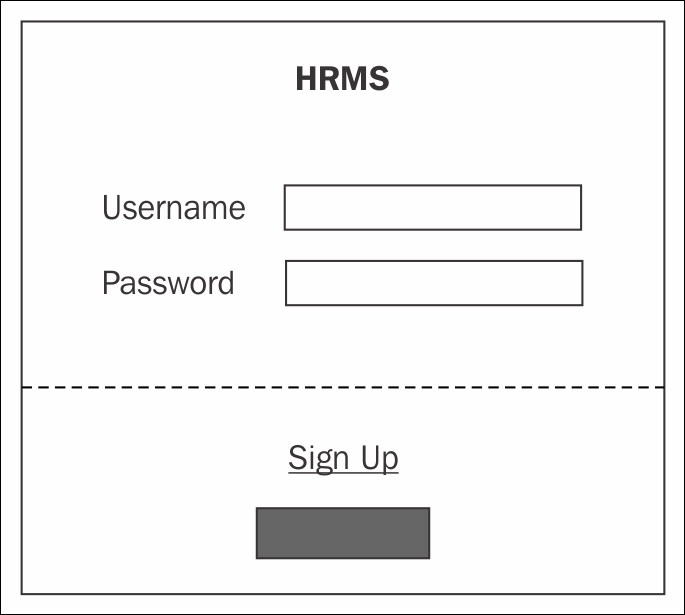The Human Resource Management System (HRMS) project simulates how a human resources department works. The basic activities featured in the system include employee profile management, leave management, attendance monitoring, project performance evaluation, training and career enrichment assessment, and company information dissemination. Just like any typical information system, HRMS has its own administrator module for user and role management. In the meantime, all security is database-driven.
The software design started with the following wireframes suited to start a HRMS prototype with valid functional specifications:
The main page: Since the proposed system is an intranet type to be accessed only by employees of a company, the final design for the home page is simply the login page with a signup page at the side.

The admin page: The only role of the admin page is to activate, de-activate, penalize, and monitor HRMS access and traffic. The administrator's page has some...



